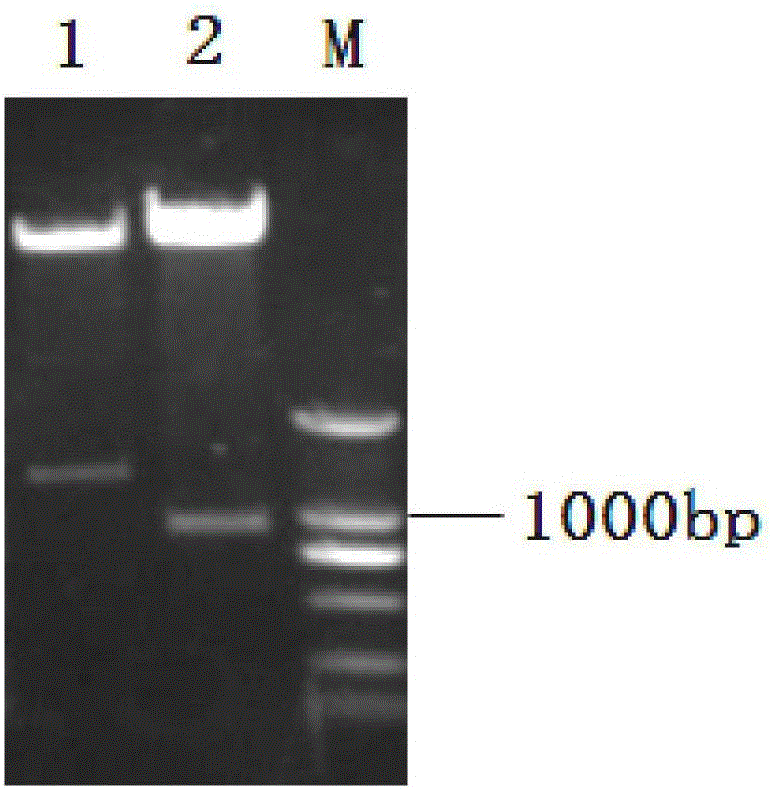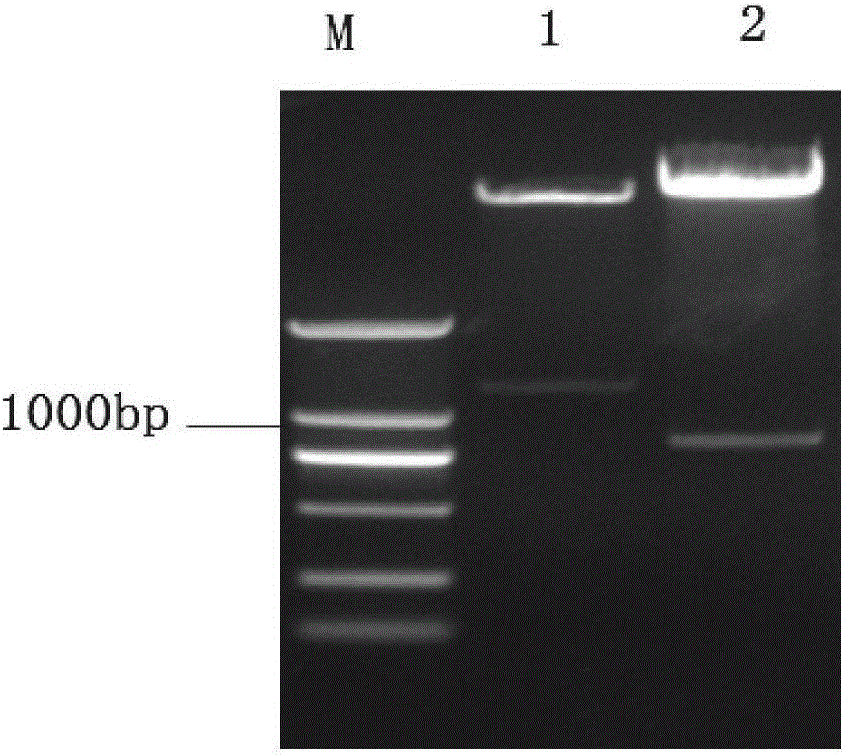Biotechnological breeding method for obtaining antiviral seedless grapes
A seedless grape, biotechnology technology, applied in the field of agricultural biotechnology breeding, can solve the problems of high disease resistance and multiple copies of transformed plants, only partial expression of genes, and no disease resistance in seedless grapes, and is conducive to vector construction. and the effect of genetic transformation
- Summary
- Abstract
- Description
- Claims
- Application Information
AI Technical Summary
Problems solved by technology
Method used
Image
Examples
Embodiment 1
[0050] Example 1 Obtaining grape zygotic embryos with seedless genes through hybridization and embryo rescue between seedless grape varieties:
[0051] Step A-1. Manually detassell the female parent variety 3 days before flowering (in this example, the female parent variety is "Red Face Seedless"), and the inflorescences after emasculation are immediately sprayed with clean water, bagged and tagged ;
[0052] Step A-2, 2-3 days after emasculation, dip the pollen of the male parent with a brush (the male parent variety is "flame seedless" in this embodiment) and scatter it on the stigma of the female parent for artificial pollination;
[0053] Step A-3, collect young fruit in the field 6 weeks after pollination, rinse with tap water for 10 minutes; soak with 70% alcohol for 1 minute on the ultra-clean workbench, and then use 0.1% HgCl 2 Soak and disinfect for 8 minutes, rinse with sterile water 4 times;
[0054] Step A-4, the sterilized fruit grains are placed in a sterilized...
Embodiment 2
[0056] Example 2 Induction of somatic embryos by zygotic embryos
[0057]Step B-1, inoculating the hybrid zygotic embryos obtained in step A on solid embryogenic callus induction medium, the composition of the embryogenic callus induction medium is TL+0.5mg / L 6-BA+1.0mg / L 2,4-D, in which additional sucrose 30g / L, agar 6.0g / L;
[0058] Step B-2: After the zygotic embryos are cultured on the embryogenic callus induction medium for 4 weeks, the obtained yellow, granular, and compact embryogenic callus is inoculated on a solid somatic embryo differentiation medium , the composition of the somatic embryo differentiation medium is TL+0.5mg / L 6-BA+2.0mg / L NAA, in which 30g / L sucrose and 6.0g / L agar are added;
[0059] Step B-3: After the embryogenic callus is cultured on the somatic embryo differentiation medium for 4 weeks, a large number of somatic embryos can be induced and obtained. In this embodiment, most of the somatic embryos are at the cotyledon stage at this time. .
Embodiment 3
[0060] Example 3 Construction of RNAi Antiviral Plant Expression Vector and Transformation into Agrobacterium tumefaciens
[0061] Step C-1 (construction process of entry-level cloning vector), in the present embodiment, RNAi interference fragment GV is the 825bp obtained after concatenating the conserved segments of four grape virus coat protein genes of GFLV, GLRaV-3, GVA and GVB A large fragment (see SEQ ID NO.1 for the sequence). Use the GV upstream primer GV-F (the primer sequence is CACCATGGGTGATGAGCTTTGATGC, see SEQ ID NO.2 for the sequence) and the downstream primer GV-R (the primer sequence is TAGACTCTCAAGCTTGCTAA, see the SEQ ID NO.3 for the sequence) to carry out PCR amplification with the addition of the GV adapter CACC, The PCR reaction system in this example is: 10×Buffer 5 μL, dNTP mixer (2.5mM of each dNTP) 5 μL, GV-F (10 μmol / L) 2 μL, GV-R (10 μmol / L) 2 μL, Pfu DNA Polymerase 1 μL, Template 1 μL, sterile double distilled water 34 μL, total volume 50 μL. The ...
PUM
 Login to View More
Login to View More Abstract
Description
Claims
Application Information
 Login to View More
Login to View More - R&D
- Intellectual Property
- Life Sciences
- Materials
- Tech Scout
- Unparalleled Data Quality
- Higher Quality Content
- 60% Fewer Hallucinations
Browse by: Latest US Patents, China's latest patents, Technical Efficacy Thesaurus, Application Domain, Technology Topic, Popular Technical Reports.
© 2025 PatSnap. All rights reserved.Legal|Privacy policy|Modern Slavery Act Transparency Statement|Sitemap|About US| Contact US: help@patsnap.com



